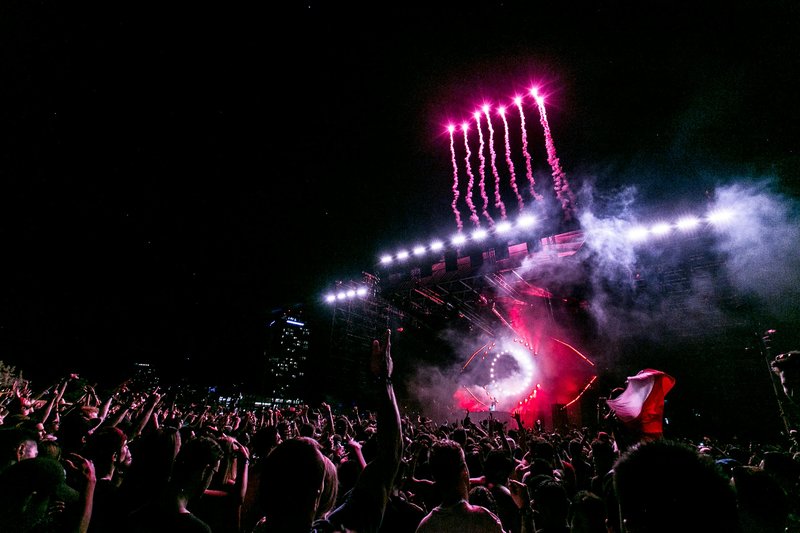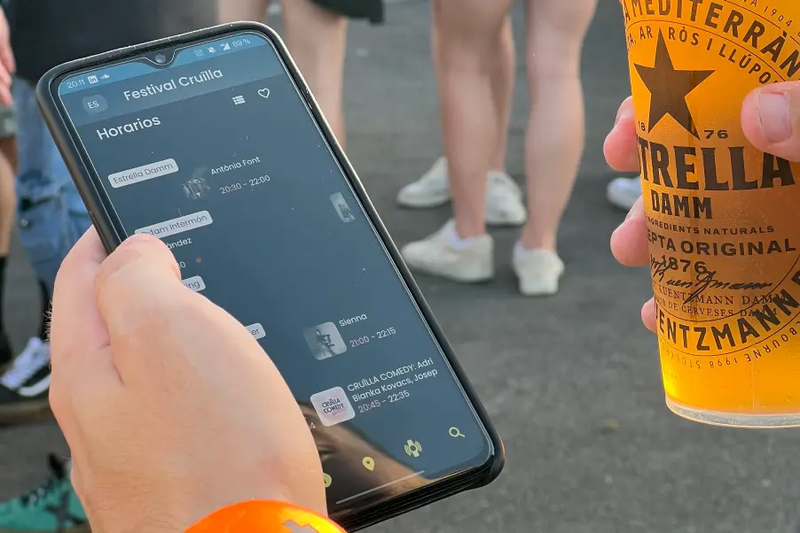It’s 5 PM on festival day. The main stage act just got delayed 30 minutes because of a sudden storm. Your website still shows the old schedule. Your social team posts the update on Instagram — but half your crowd never sees it.
Sound familiar?
Festival websites are great at selling tickets and building anticipation, but once the gates open, their job is basically done. When it comes to live communication, they fall behind the rhythm of the event itself.
Let’s explore why static websites can’t keep up with dynamic festivals — and what’s replacing them.
1. Websites Were Built for Selling, Not for Guiding
Most festival websites do their main job well: they promote the lineup, push ticket sales, and share key info like maps and FAQs.
But they’re designed for a pre-event mindset. Once the festival starts, attendees don’t need a sales pitch — they need fast, reliable, and relevant updates.
Here’s what happens in practice:
- Updates require web developers or CMS access — which slows everything down.
- Attendees struggle to find the latest info on mobile.
- Emergency messages or schedule changes get lost in a maze of tabs and pages.
In short: traditional websites weren’t built for real-time events.

2. The Reality of a Live Festival
Festivals are living organisms. Things shift constantly — stage times, entrances, weather conditions, even menus. Your audience expects updates to flow as quickly as the music changes.
Today’s attendees:
- Navigate mostly on their phones.
- Expect personalized, app-like experiences.
- Lose patience with slow or cluttered websites.
When information doesn’t flow seamlessly, confusion spreads — and the attendee experience suffers. The truth is: you can’t treat a three-day, multi-stage event like a static brochure.
3. The Communication Gap: From “Before” to “During”
Think of your communication timeline in two phases:
- Before the event:
- Goal: promote, sell, excite
- Best tool: website + social media
- During the event:
- Goal: inform, guide, update
- Best tool: real-time web app
Your festival website is perfect for the before. But once attendees arrive, they don’t want to scroll through ticketing pages or news posts. They want to know what's happening now, what's coming next, and what has just changed.
4. Enter the Festival Web App
This is where web apps step in — and they’re quietly redefining the festival experience. Unlike mobile apps, web apps don’t need to be downloaded. Attendees just scan a QR code or tap a link, and they’re in.
From there, they can:
- See the current schedule in real time.
- Filter by stage, artist, or favorites.
- Get instant alerts about changes or promotions.
- Recharge their wristbands or find food stands.
For organizers, that means:
- Updates go live instantly (no developer or app-store delay).
- Communication is centralized and consistent.
- Data and engagement metrics are visible in real time.
In other words: web apps bridge the gap between your marketing website and your social feeds.

5. Real-World Example
At Cruïlla, organizers used a web app to manage sudden weather cancellations and reschedules. While their website and Instagram struggled to keep up, attendees saw live notifications and updated lineups within seconds — no confusion, no chaos.
The result? Smoother operations, fewer complaints, and more trust.
6. A Complement, Not a Replacement
The point isn’t to throw away your website — it’s to let it do what it does best: promotion and storytelling. Your web app takes over once the event begins — navigation and communication.
Together, they form a full digital ecosystem:
- Website: Get people to the festival.
- Web app: Guide them through it.
- Social media: Capture and amplify the emotion.
When each channel plays its role, your audience feels informed, connected, and cared for.
7. The Takeaway
In 2025, festival-goers expect real-time information that matches the pace of the event. Websites will always be part of the story — but not the whole story.
If your goal is to create a frictionless experience for your audience and keep full control over your communication, it’s time to add a dynamic layer on top: the festival web app.
Your website brings people to the gates.
Your web app guides them through the experience.